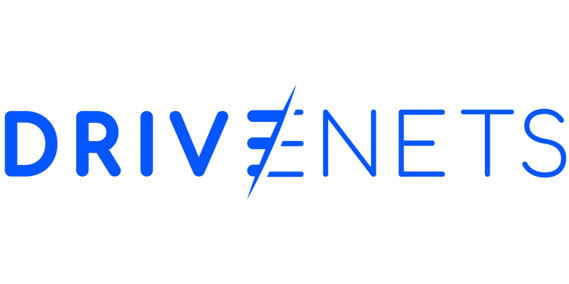Is artificial intelligence (AI) as great as everyone says? It has made its way into almost every industry, so it is certainly popular. While some may hesitate to adopt it, using AI could revolutionize practically every aspect of facilities management. Whether managers need help sorting records, responding to emails or scheduling staff, AI can help.
Facility Management Problems AI Can Address
Most facilities managers encounter the same problems. For instance, over 75% of them agree health and safety outrank security, employee turnover, maintenance expenses and energy management as their top concerns. This issue covers anything from marking a puddle on the floor to developing an evacuation route in case of a fire.
Of course, facilities managers also contend with mundane things like utilities or labor management. Since energy is one of their largest expenses, they often try to find ways to cut costs and reduce waste. When they’re not optimizing operational technology, they focus on administrative work like making schedules or responding to emails.
Facilities managers can use their shared experiences to develop proven solutions with AI. Why do they need to use it to address their problems? Despite being chronically understaffed, many face increasingly high expectations and growing lists of work orders. Intelligent automation is key to lightening their workloads without sacrificing quality.
An advanced algorithm can process or produce hundreds of thousands of words in moments. When embedded into a computer vision system or Internet of Things (IoT) device, it can extract valuable insights from nearly imperceptible patterns in data. Best of all, it needs no oversight or manual intervention — professionals can trust it to work independently.
The Benefits of Incorporating AI Into Operations
Why should management choose AI over similar technologies like robotic process automation or robotics? The biggest difference between an it and a conventional automation tool is intelligence. Algorithms are one of the only solutions that can consider context and weigh variables when making decisions.
If an unexpected situation arises, a machine learning model can adapt. It learns as it absorbs new information, enabling real-time adaptation. Unlike rule-based chatbots or robot process automation software, it won’t freeze up or fall back on an imprecise script when it encounters a situation for the first time.
This level of automation gives decision-makers the confidence to let algorithms run around the clock with little to no supervision. This way, they streamline day-to-day operations without running up labor expenses. Also, they don’t risk returning to a stack of unanswered questions or unaddressed complaints — AI can handle things while they’re gone.
Surprisingly, most facilities managers haven’t explored AI yet even though its potential is evident. Although nearly 60% of them share an interest in it, just 10.4% have incorporated in into their operations. While their reasons for holding off on adoption vary, around 25% admit they are concerned it would change their roles.
The truth is that AI isn’t here to replace staff or steal jobs. While its automation capabilities are incredibly powerful, it is still just a tool — it needs someone to wield it. Advanced algorithms are relatively recent inventions. It could take decades before they are at a high enough level to accurately perform every job function a facilities manager position requires.
5 Ways AI Could Transform Facilities Management
Those who are still on the fence about incorporating AI into facilities management should consider how it could transform their day-to-day operations.
- Maintenance – Cleaning and maintenance are some of the most tedious facilities management responsibilities, but machine downtime can significantly impact operations. With AI-powered predictive analytics, operators and managers can act proactively instead of waiting for things to break down. This can improve labor productivity by up to 20% and reduce downtime by upwards of 15%.
- Security – Embedding AI into surveillance systems enables around-the-clock monitoring in real time. The algorithm can connect to other security systems and tools like door alarms or facial recognition software. AI can detect intruders and potential criminal activity, but it can also monitor employees and identify safety issues, such as when workers are not following safety protocols.
- Communication – With AI, management can translate legal jargon, summarize reports and make their messages easy to understand. This technology can even automatically respond to facilities-related requests like placing orders or providing directions, increasing staff productivity by 80% and reducing the average time to resolution by up to 90%.
- Supervision – AI makes supervision seamless — even when facilities managers aren’t on-site. Using it to analyze data from radio frequency identification badges or surveillance cameras helps them make sure every employee is where they’re supposed to be. Since it is automated, they don’t have to check in — they can rely on the algorithm to alert them of any unusual behavior.
- Recordkeeping – An advanced algorithm can summarize, retrieve and maintain records for compliance and future reference, simplifying the administrative side of things. A large language model or chatbot can even answer questions about the documents to help facilities managers uncover critical information in moments.
Transforming Day-to-Day Operations With AI
Whether management leverages AI for security, maintenance, utilities or scheduling, it frees up valuable time. Instead of spending hours on busy work, facilities management can turn their attention to more mission-critical functions. If they utilize this technology in multiple aspects of their day-to-day operations, they could revolutionize what it means to be in their position.
About the Author

Ellie Gabel is a freelance writer who is passionate about covering the latest innovations in science and technology and how they’re impacting the world we live and work in. When she’s not busy writing, you can find her spending quality time with her husband and their cats.
Sign up for the free insideAI News newsletter.
Join us on Twitter: https://twitter.com/InsideBigData1
Join us on LinkedIn: https://www.linkedin.com/company/insidebigdata/
Join us on Facebook: https://www.facebook.com/insideAI NewsNOW




